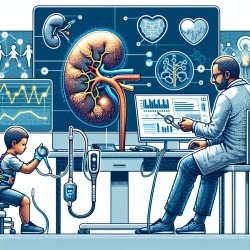Revolutionizing Aphasia Rehabilitation: Insights from the CeSAR Study
Aphasia, a common consequence of stroke, significantly impacts communication abilities, leading to profound life changes for affected individuals. While traditional speech and language therapy (SALT) remains the cornerstone of aphasia treatment, researchers are exploring innovative methods to enhance recovery. One promising approach is the use of transcranial direct current stimulation (tDCS) targeting the cerebellum, as outlined in the recent study, "Protocol for Cerebellar Stimulation for Aphasia Rehabilitation (CeSAR): A randomized, double-blind, sham-controlled trial."
The Study at a Glance
The CeSAR study investigates the effectiveness of cathodal tDCS applied to the right cerebellum in conjunction with Semantic Feature Analysis (SFA) for treating chronic aphasia. This randomized, double-blind, sham-controlled trial aims to determine whether cerebellar tDCS can significantly improve naming abilities in individuals with chronic aphasia, compared to sham stimulation.
- Participants: 60 individuals with chronic aphasia, post-stroke.
- Treatment: 15 sessions of cerebellar tDCS combined with SFA.
- Outcome Measures: Naming abilities, functional communication, and quality of life.
Key Findings and Implications
The study hypothesizes that cerebellar tDCS, when paired with SFA, will lead to greater improvements in naming untrained pictures, as measured by the Philadelphia Picture Naming Test, compared to sham stimulation. Additionally, the research aims to identify imaging and linguistic biomarkers that predict which stroke patients will benefit most from this treatment approach.
For practitioners, these findings suggest a potential paradigm shift in aphasia rehabilitation. By incorporating cerebellar tDCS into therapy regimens, speech-language pathologists (SLPs) may enhance the efficacy of traditional treatments, offering new hope to patients with chronic aphasia.
How Practitioners Can Leverage These Insights
As a practitioner, you can consider the following strategies to integrate the study's findings into your practice:
- Stay Informed: Keep abreast of emerging research on cerebellar tDCS and its applications in aphasia rehabilitation.
- Collaborate: Work with neurologists and researchers to explore the feasibility of incorporating tDCS into your treatment protocols.
- Advocate for Innovation: Encourage your institution to invest in tDCS technology and training to enhance patient outcomes.
- Participate in Research: Consider enrolling in or collaborating on clinical trials to further investigate the benefits of cerebellar tDCS in aphasia treatment.
Conclusion
The CeSAR study offers compelling evidence for the potential of cerebellar tDCS to augment traditional aphasia therapies. By embracing this innovative approach, practitioners can contribute to advancing the field of speech-language pathology and improving the quality of life for individuals with aphasia.
To read the original research paper, please follow this link: Protocol for Cerebellar Stimulation for Aphasia Rehabilitation (CeSAR): A randomized, double-blind, sham-controlled trial.










